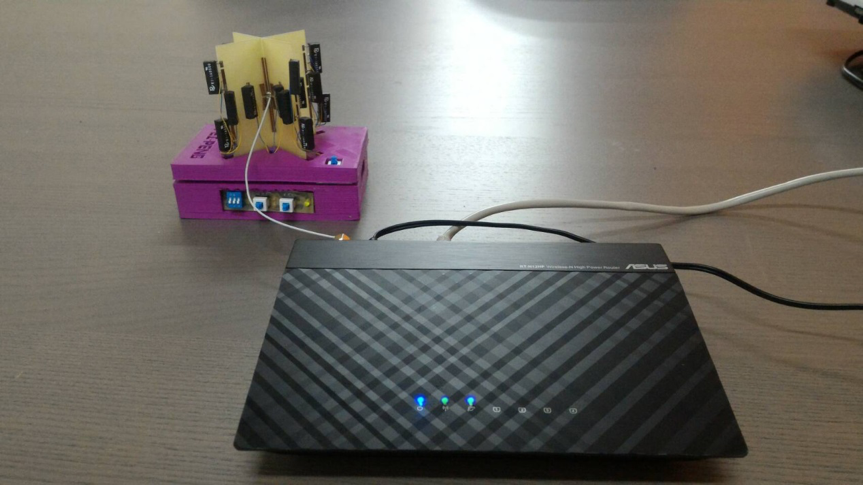A dual-band pattern reconfigurable antenna having sixteen radiation modes

|
Name |
Year |
|
Fei-Peng Lai |
2016 |
|
Keywords |
|
|
antenna, smobile communication, wireless LAN, Yagi-Uda antenna |
In this project, a compact and dual-band pattern reconfigurable antenna is proposed for the base stations of wireless local area network (WLAN). Conventionally, the antenna operating in this application has an omnidirectional pattern, and it radiates at only 2.4 GHz; since the radiating power is equally and uniformly distributed in 360 degrees, the transmission range decreases unless more transmitting power is used. Nevertheless, an antenna with unidirectional radiation cannot work for this situation because a user receives no WLAN signals as he/she moves toward the nulls of the radiation pattern. In this work, the proposed antenna overcomes these limitations, reducing the setup costs of base stations because it operates in 2.4 GHz and 5.8 GHz. The proposed antenna is based on the topology of Yagi-Uda antenna; however, its director and reflector are accomplished by the same metal strips interconnected with relay switches. By opening or closing the switches, the length of the strips change, resulting in reflectors or directors for the driven element. Accordingly, eight directive radiation patterns are achieved for an operational frequency, leading to larger coverage and higher reliability.
The proposed antenna serves two scenarios. On one hand, as the WLAN base station is located at the corner of an indoor environment, the proposed antenna supplies a high-gain mode because it selects a highly-directive radiation toward the users. Therefore, the coverage increases, and the transmission efficiency is enhanced. On the other hand, as the users are uniformly distributed in the entire two-dimensional plane, the proposed antenna supplies a beam-switching mode by exchanging the main beam of the eight radiation patterns. The resultant transmission range increases as compared to the conventional omnidirectional base-station antenna.
The proposed antenna was also fabricated and tested. Its dual-band performances were confirmed by simulated and measured results, including return loss, radiation patterns, and antenna efficiency. These results meet the specification of WLAN base stations, verifying the proposed antenna indeed outperforms the conventional single-band omnidirectional antenna.





